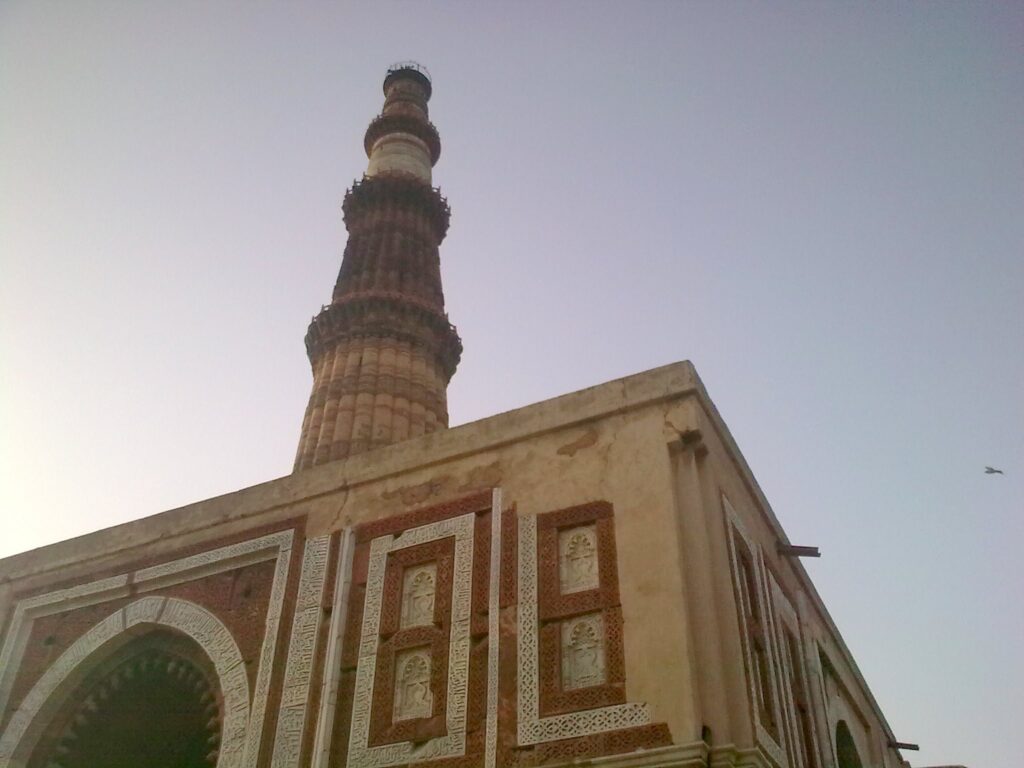Qutub Minar in Delhi is one of the most popular monuments among all the structures built in the Islamic period. It is one of the most visited tourist spots in the country and every year millions of people from all over the world visit it.

This shows the popularity and significance of this minaret. If you are planning a visit to the Qutub Minar, here are a few things that you would want to know about this place:
History of Qutub Minar
The foundation of this magnificent structure was laid under the orders of the founder of the Delhi Sultanate, Qutub-ud-din Aibak in 1192. It was a tower built to mark the victory of the emperor over the last Hindu king and is also named after him. However, under his rule, the minaret had only a single storey.
The Qutub Minar we see today is a work that was carried on for four centuries under many different rulers. By 1220 three more floors were added to the minaret by Iltutmish, the successor of Aibak. The final storey, that is the fifth storey, was constructed by Firoz Shah Tughlaq making Qutub Minar the world’s tallest brick tower. Finally, Sher Shah Suri built the entrance to this beautiful Minar.
Over time, the tower suffered multiple damages and was reconstructed by multiple people, which might have caused a slight tilt. A sixth storey was also added by a British Army official which was later removed and placed next to the minaret.
Architectural facts about the Tower
The 800-year-old tower stands at a massive height of seventy-three meters. The structure is somewhat conical, with a wider base and a thinner top. Every storey is unique in its make and design, thanks to the contribution of different rulers. The uppermost structure is constructed with white marble and sandstone, followed by the fourth storey of pure marble. The bottom three layers are made from red sandstone.
One can reach the tower top climbing the 379 steps arranged spirally. Each floor of the minaret has a balcony with a clear view of the Qutub complex. The interiors are adorned with inscriptions that tell the story of the Qutub Minar.
The Qutb Complex
The tall brick minaret is encircled with many other historical monuments. All these combined, form the Qutb Complex. The notable structures and the attractions of this complex are:
- Tomb of Iltutmish
- 2000 years old Iron Pillar of Delhi
- Ruins of Quwwat-ul-Islam mosque, the oldest mosque of India
- Alai Darwaja
- Alai Minar
- Sundial of Sanderson
- Cupola or the sixth storey of Major Smith
Ban on Entry to the Qutub Minar
The minaret was open to the public for a long time till an ill-fated incident took place in 1981. December 4, 1981, was the last day when tourists were allowed to enter the Qutub Minar. More than three-hundred people were inside the tower when a sudden power breakdown occurred, plunging the staircase into pitch darkness.
The panic among the people soon led to a stampede and forty-seven of them lost their lives in this accident. Since then, the Indian government has imposed a ban on entry to the Qutub Minar.
Conclusion
The Qutub Minar is a world heritage and has been standing firm for eight-hundred years now even after suffering damages from natural forces. After its construction, many emperors attempted to build a more towering structure but failed. Even after the ban, its beauty has been attracting a huge number of tourists throughout the year and is worth a visit.
